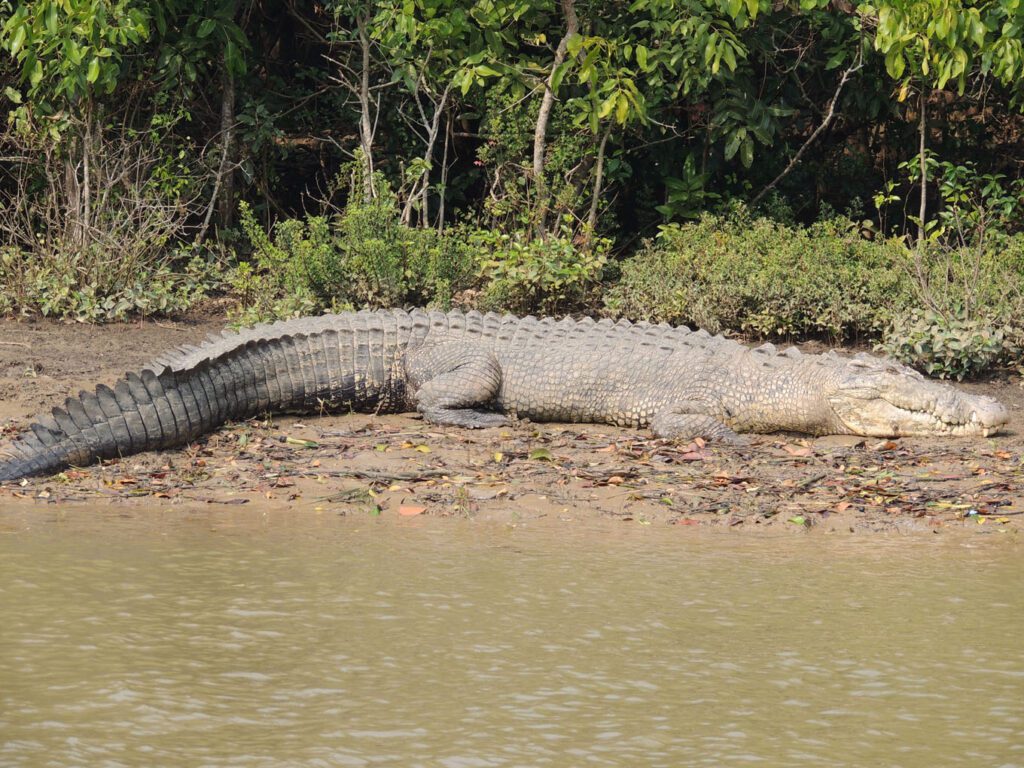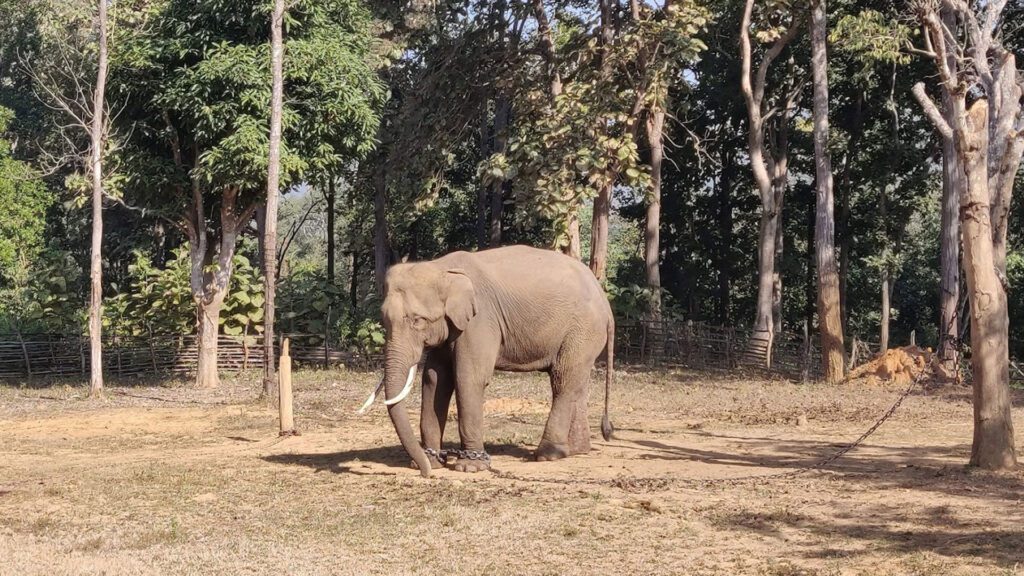Bhitarkanika National Park, located in the Kendrapara district of Odisha, is a spectacular combination of mangrove forests and rivers with wildlife. It is on the list of India’s most important wildlife sanctuaries and is part of the Bhitarkanika Mangrove ecosystem, which is the 2nd largest in India.
A dream place for nature lovers, Bhitarkanika offers not just biodiversity of rare reptiles and colourful birds, among many others, but also opportunities for eco-tourism. Whether you’re a birdwatcher or a wildlife lover, Bhitarkanika is the best destination for Odisha tourism.
Flora and Fauna of Bhitarkanika
Bhitarkanika National Park is a biodiversity hotspot, or what is more precisely called the largest saltwater crocodile habitat in India. The Olive Ridley turtles are here as well, and they are endangered. The turtles lay eggs on the canopied beaches on the inside of the beach.
The park is also home to some of the most beautiful migratory birds such as the kingfishers, herons, and white crocodiles, to name a few. The reptiles lay claim the land where there are species for light’s luxurious darkness, income, food, hunting, protection and for self-birth/reproduction & zoogony.
Sundari, Avicennia and all of their companions exhibit sequences of sporulating species to create a world for the wristwatchening aquatic species to use. Each bend in the creek from one’s hat or boat I felt there are wildlife assemblages to rely on as I wandered through an ecology hot spot.

History and Background
The origins of Bhitarkanika date back 3,000 years to when it was part of the Kalinga kingdom. Historically, it was used by the kings of Odisha as a harbor for ships traveling to South-East Asia for trade. It was designated a wildlife sanctuary in 1975 before becoming a National Park in 1998 to protect the endangered Saltwater Crocodile population. As an ecotour destination in Odisha, Bhitarkanika enables visitors to experience mangrove forests, wildlife safaris, birdwatching, photography, hiking trails, and learning about conservation efforts that preserve its biodiversity.

Major Attractions in Bhitarkanika
A trip to Bhitarkanika National Park would be incomplete without having been to Dangmal, a great place to go bird watching and see crocodiles. Habalikhati is the next great stop where visitors can just relax and take a boat ride through the lush mangrove forest, boating the serene waters as the guide points out the rare water birds and reptiles.
The Crocodile Breeding Center at Bhitarkanika is also an interesting stop. Bhitarkanika houses an endangered species of saltwater crocodiles, and improved conservation efforts and breeding methods have gone into preserving the species. The boat safari through either the Brahmani or the Baitarani river is an interesting and thrilling experience and is worthwhile for anyone who enjoys ecotourism. With ancient temples like Gahirmatha in the park, a visit can also provide a cultural aspect to your ecotourism experience.
Things to See and Do
As part of an Odisha tourism visit, Bhitarkanika offers much to explore within its wetland ecosystem:
- Crocodile Spotting – Catch glimpses of dangerous estuarine crocodiles along rivers and creeks
- Birdwatching – Over 215 avian species like kingfishers, egrets, sandpipers, etc.
- Nature Walks – Guided walking trails meandering through dense mangrove forests
- Boat Rides – Sightseeing tours and photography from motorboats and country boats
- Gahirmatha Beach – Olive ridley turtles mass nesting along the coast close to Bhitarkanika
- Wildlife Safaris – Take open jeep drives to spot deer, monkeys, snakes, and other fauna
Best Time to Visit Bhitarkanika National Park
The best time to visit Bhitarkanika National Park is during the winter months from November to February, when the weather is enjoyable for wildlife spotting and bird watching. The cool breeze and clear sky add to the fun of boating safaris through the mangrove creeks.
Another magnificent time to visit is during the monsoon months from July to October, when the park contains bright shades of green and the rivers are full and making for a magnificent sight to visit. However, be aware that some areas may not be easy to reach/visit due to the higher water levels.
Summer months from March to June can be hot and humid, but early morning hours and late afternoon hours are great for crocodile spotting. Plan your travel around your needs to enjoy the true natural beauty that Bhitarkanika National Park has to offer.
Conservation Efforts in Bhitarkanika
Bhitarkanika National Park is an internationally recognised success story in terms of conservation with regards to the endangered saltwater crocodile, and with breeding programs in place to increase their numbers, it has been very successful. Olive Ridley turtles also nest along the Gahirmatha coast, and are also protected here.
The park is involved in promoting eco-tourism with local communities to promote proper, eco-friendly tourism, while ensuring minimal impact to the surrounding environment’s deteriorating ecology. Strict anti-poaching laws and awareness programs are also in place to protect and preserve Bhitarkanika’s biodiversity, and it serves as an example both within India and globally with regards to sustainable wildlife tourism.
Travel Tips for Visiting Bhitarkanika
The nearest major town to Bhitarkanika National Park is Kendrapara, located only 130 km by road from Bhubaneswar. You’ll need an entry permit, which you can get from the forest office at Chandbali or Rajnagar. To enhance your exploration of Bhitarkanika National Park, I highly recommend joining a guided boat tour, which is both informative and reasonably safe.
While there are options for places to stay near the Park, you can find accommodations ranging from forest rest houses to budget hotels in the Kendrapara district with your research. Bring light cotton clothes, binoculars for birdwatching, mosquito repellent, and limit your luggage.
Since Bhitarkanika is a protected area, please adhere to the practices of conservation-based eco-friendly tourism by making sure that you do not litter and keep your distance from wild animals. Congratulations! You are halfway there! With a bit of organization, you are going to have an unforgettable vacation when visiting Bhitarkanika National Park!
Tourist Facilities, Transportation, Tourist Attractions, How to Reach, Accessibility
Opening Time
Bhitarkanika National Park & Nature Camp Opening time is Monday to Sunday 6:30 AM to 5:00 PM
Best Time to visit
The best time to visit Bhitarkanika National Park October to February
Closest Bus Stand & Distance
The Closest Bus stop isKendrapara, which is located around75 km from Bhitarkanika National Park
Closest Railway Station from Bhitarkanika National Park
The ClosestRailway Station is Bhadrak, which is located around 130 km away from Bhitarkanika National Park
Closest Airport
The Closest airport is Biju Patnaik International Airport, Bhubaneswar, which is located around150 km away from Bhitarkanika National Park







